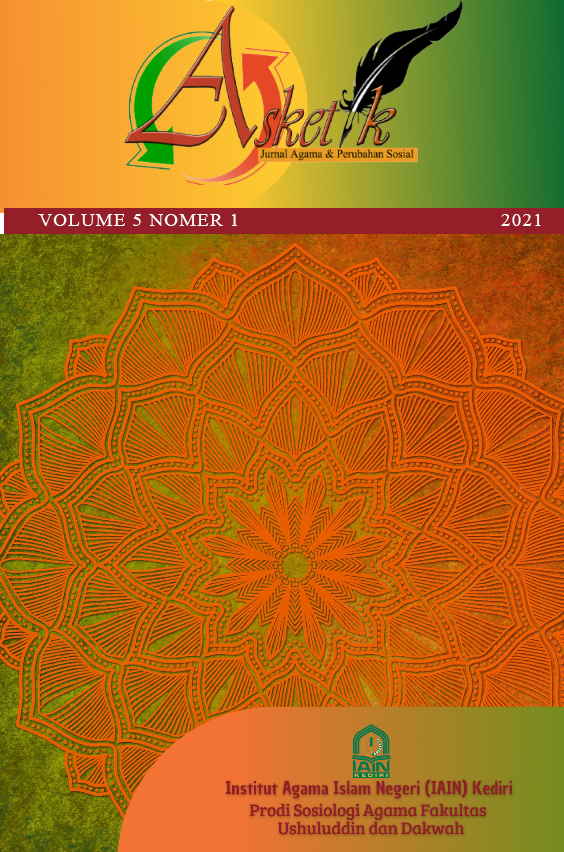Kolaborasi Aktor Pada Penanganan Kekerasan terhadap Perempuan Di Kabupaten Aceh Tamiang
DOI:
https://doi.org/10.30762/asketik.v5i1.95Keywords:
Actor, Collaborative Process, Violence of WomenAbstract
Women are still afraid to voice the violence that happened to them and choose to remain silent. Violence against women also occurred in Aceh Tamiang District with various forms of violence experienced by them. The purpose of this study is to analyze violence against women in Aceh Tamiang District. The research method used is qualitative with purposive selection of informants and data collection techniques through observation, interviews, and documentation. The results of the study found that the communication built by the Village Community Empowerment Service, Women's Empowerment and Family Planning was still lacking. Added value is public value, which is the result of efficiency, democracy in institutions, and collaboration processes. There is a deliberation process which is a collaboration that forms mutual learning, building communities and employing interactive. In addition, it was found the importance of academic involvement in providing opportunities for women victims of violence to continue their education to a higher level.
Downloads
References
Agranoff, R., & McGuire, M. (2003). Collaborative Public Management: New Strategies for Local Governments. Washington DC: Georgetown University Press.
Brysk, A. (2017). Violence against women: law and its limits. Deusto Journal of Human Rights, (1), 145–173. https://doi.org/10.18543/djhr-1-2016pp145-173
Creswell, J. W. (2013). RESEARCH DESIGN Pendekatan Kualitatif, Kuantitatif, dan Mixed. Yogyakarta: Pustaka Pelajar.
Creswell, John W. (2016). Research Design: Pendekatan Metode Kualitatif, Kuantitatif, dan Campuran. Yogyakarta: Pustaka Pelajar.
Fakih, M. (2000). Kekerasan Dalam Perspektif Pesantren. Jakarta: Grasindo.
Foley, S., Ngo, H. Y., Loi, R., & Zheng, X. (2015). Gender, gender identification and perceived gender discrimination: An examination of mediating processes in China. Equality, Diversity and Inclusion, 34(8), 655. https://doi.org/http://doi.org/10.1108/EDI-05-2015-0038
Ilyas, H. (2006). Agama yang Membebaskan Perempuan dari Kekerasan. Kedaulatan Rakyat.
Istiqomah. (2017). Aral Terjal Menghadang Perempuan: Studi Pencegahan Kekerasan Bagi Perempuan Oleh LSM Rifka Annisa di Ngalang, Gunungkidul. Jurnal Pemberdayaan Masyarakat, 1(1), 2580–2863. Retrieved from http://journal.uinsuka.ac.id/dakwah/JPMI
Kuper, A., & Kuper, J. (2000). Ensiklopedi Ilmu-Ilmu Sosial. Jakarta: PT. Raja Grafindo Persada.
Miles, M. B. ., & Saldana, M. H. (2014). Qualitative data analysis: a methods sourcebook. Arizona State University.
Sari, A. A., & Purwanti, A. (2018). Penegakan Hukum Tindak Pidana Kekerasan Terhadap Perempuan Di Kota Demak. Masalah-Masalah Hukum, 47(3), 317. https://doi.org/10.14710/mmh.47.3.2018.317-337
Siregar, E., Rakhmawaty, D., & Siregar, Z. A. (2020). Kekerasan Seksual Terhadap Perempuan: Realitas dan Hukum. PROGRESIF: Jurnal Hukum, 14(1). https://doi.org/10.33019/progresif.v14i1.1778
Sugiarto, R., & Putrianti, F. G. (2018). Sosialisasi dan Pelatihan Pencegahan Kekerasan Dalam Rumah Tangga Di Desa Baturetno Kabupaten Bantul. Abdimas Dewantara, 1(2), 84–95.
Thomson, A. M., & Perry, J. L. (2006). Collaboration Processes: Inside the Black Box. In Public Administration Review (pp. 20–32).
Wangga, M. S. E. (2007). Kekerasan Dalam Rumah Tangga dan Usaha Merumuskan Relasi Familial Yang Demokratis. Urnal Ilmu Hukum Universitas Islam Syekh Yusuf.Jayanti Sari, Neni Sriwahyuni, Susniwati, Kolaborasi Aktor Pada Penanganan Kekerasan http://jurnalfuda.iainkediri.ac.id/index.php/asketik|42
Wood, D. J., & Gay, B. (1991). Towards a Comprehensive Theory of Collaboration. Ournal of Applied Behavioral Science, 27, 139–162.
Downloads
Published
How to Cite
Issue
Section
License
Copyright (c) 2021 Jayanti Sari, Neni Sriwahyuni, Susniwati

This work is licensed under a Creative Commons Attribution-ShareAlike 4.0 International License.





















